Think about the future and how comfortable it will be with ergonomic backpack straps. Your backpack is more than just an accessory; it’s a customized part of your journey.
I now know how to carry things without pain. I learned this through my experiences and knowledge of ergonomics. As you start your next trip, imagine a backpack that suits your every move, so you can enjoy the journey.
Cheers to improving your backpack experience! May your shoulders appreciate the comfort and style you’ve chosen.
Proper Fit and Placement of Backpack Straps
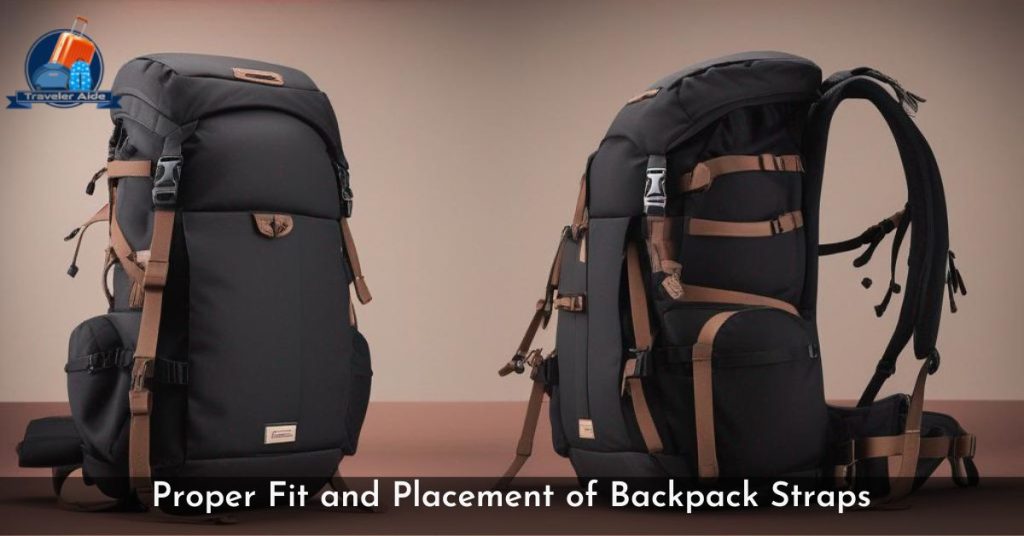
To adjust backpack straps, make sure the pack sits evenly on your back and feels comfortable. Make sure the straps on your shoulders are smooth and don’t dig in. This will let your arms move freely.
Adjust Straps for Torso Length
Loosen the straps and position the hip belt so the pack rests on your hips. Tighten the shoulder straps for a balanced and secure fit. For most people, the straps should attach to the pack at about mid-torso. Those with longer straps for torsos may need to loosen the straps further.
Stabilize the Load
Activate the sternum strap and hip belt to stabilize the load, minimizing strain on your back. The sternum strap should sit at the base of your rib cage. The hip belt should wrap firmly around your hips, not your waist. This properly transfers weight to your hips and legs.
Check Shoulder Straps
If the shoulder straps are too loose, the backpack will droop.If they are overly tight, it can cause discomfort and limit blood flow. Adjust the straps evenly so the pack remains balanced. Ensure you can slide your hand between the strap and your shoulder.
You can customize and adjust your backpack to fit you comfortably with a few changes. Properly balanced straps make sure your load is supported. You can comfortably go on adventures or commute confidently. Making a few simple adjustments to your pack can have a big impact on your performance and injury risk.
Padding and Shape of Straps for Comfort
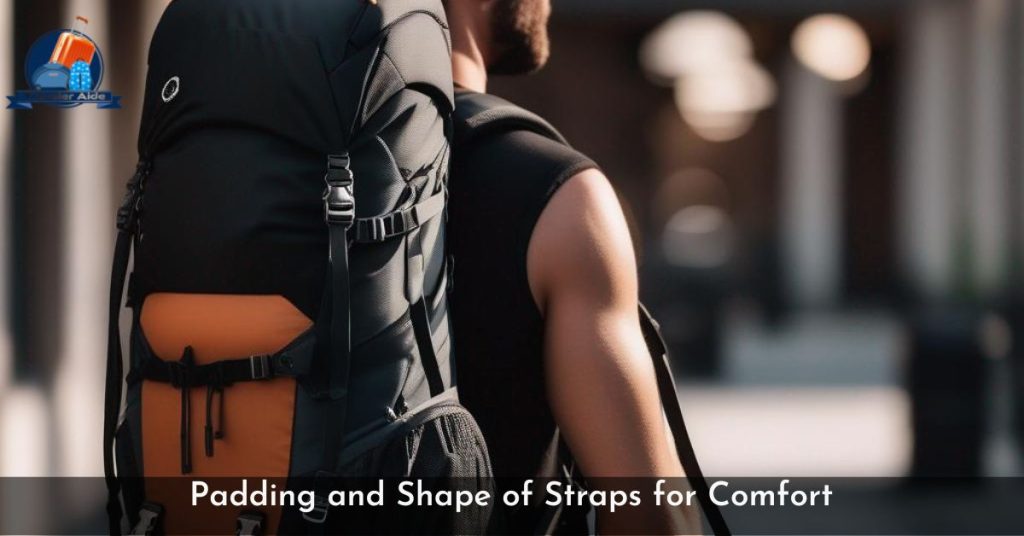
To be comfortable with a backpack, the straps need padding and a shape that fits your body.
Width and Thickness
If the straps are too narrow, they can hurt your shoulders. If the straps are too wide, they may not support you well. Look for straps that are 2 to 3 inches wide for most adults. Thicker straps, around 1/2-inch thick, also help prevent discomfort. The padding should be dense enough that you can’t feel the contents of the pack through the straps.
Contoured Shape
Shoulder straps that go straight across can strain and don’t distribute weight well. Contoured, S-shaped straps that follow the shape of your shoulders and chest are ideal. The top of the straps should attach slightly inward, nearer to your neck. The straps should curve outwards over the shoulders. Then they should curve back inwards at the bottom where they attach to the pack. This shape helps keep the pack close to your center of gravity, making it feel lighter.
Adjustability
To be really comfortable, the straps on your backpack need to be adjustable. They should fit your body and how tall you are. Find a pack with adjustable straps that can be tightened or loosened at different points. The more adjustment points, the better, especially at the top, bottom, and sternum. Be sure to adjust the straps with weight in the pack so it sits properly on your frame before heading out.
You can carry a backpack comfortably for hours with padded, adjustable straps. It won’t strain your back, neck, or shoulders. Your pack will feel almost like an extension of your body, rather than an awkward extra burden. To avoid pain, select a pack with a comfortable strap system and adjust it to fit you well.
Discussed on How To Strap Backpack To Luggage in another post.
Adjustability Features for Customization
To make sure your backpack fits well, it’s important to be able to adjust the straps. You can adjust the straps to fit your body and carry the pack without any pain.
Shoulder Straps
The shoulder straps carry most of the weight of the pack. It is important that they can be adjusted. Look for packs with straps that can be lengthened or shortened, as well as widened or narrowed. The straps should contour comfortably over your shoulders without digging in. To get the best fit, the straps should go over your shoulders and the pack should be balanced on your back. If the straps are loose, the weight hangs uncomfortably on your shoulders. If the straps are tight, it can cause pain and discomfort.
Sternum Straps
The shoulder straps attach to a strap that crosses your chest. It can be adjusted. This helps to spread out the weight. The sternum strap should sit just below your collar bones. If the straps are loose, they will slip off your shoulders. If they are too tight, it’s hard to breathe. Look for a sternum strap that allows at least 4 to 6 inches of adjustability to get the right fit for your body.
Hip Straps
Hip straps, or load lifters, attach the bottom of the shoulder straps to the top of the pack. They shift weight from shoulders to hips for added comfort. Hip straps should sit just above the top of your hip bones. If the straps are too loose, weight won’t transfer properly. If they are excessively tight, they will dig into your sides. Hip straps typically allow 6 to 8 inches of adjustability to suit different body types.
The key to backpack comfort is getting the right fit. Take the time to adjust the various straps for your body and the amount of weight you’ll be carrying. Make small changes until weight is balanced and you can walk without pain. To make sure you have a comfortable hike, customize the adjustments on your pack.
Weight Distribution Across Shoulders and Hips
The way you wear your backpack can impact how comfortable and long you can hike or travel. When choosing a backpack, think about how the straps spread weight on your shoulders and hips.
Shoulder Straps
The shoulder straps support the majority of the pack’s weight. For the most comfort, the straps should be evenly loaded and contoured to the shape of your shoulders.Choose a pack with adjustable, padded straps for customized comfort. The straps should not dig into your shoulders or rub against your neck.
Hip Belt
A strong belt on your hips can move weight from your shoulders to your hips. Your hips are better at carrying heavy things. Buckle the hip belt over the top of your hip bones and tighten until the pack feels secure and balanced. The hip belt should fit snugly but still allow for free movement. If the hip belt is not fitting well, it won’t evenly spread the weight. If it’s too tight, it may cause discomfort and limit movement.
Adjusting the Fit
When you fasten the shoulder straps and hip belt, the weight should feel even and balanced. The pack should not pull you off balance or sway side to side as you walk. Make sure the fit is comfortable before loading gear or going out. It may take a few minor tweaks to get the positioning just right.
To carry a heavy load comfortably over long distances, use a properly fitted backpack. Distribute the weight on your shoulders and hips. To fully enjoy your hiking or travel adventures, choose a good pack and adjust it for a comfortable fit. This can prevent injury and discomfort.
Choosing the Right Backpack for Your Body Type
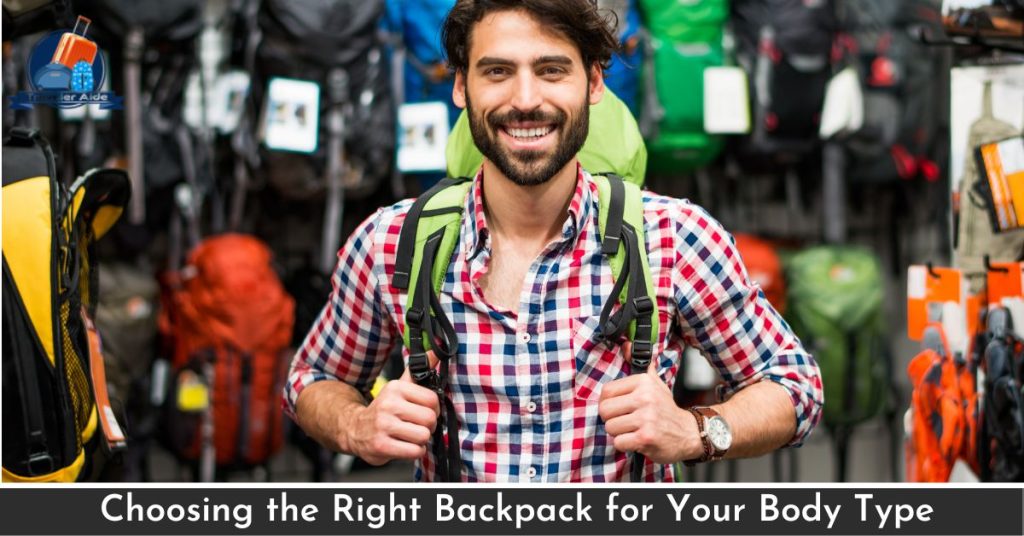
When picking a backpack, it’s important to choose one that fits your body well. This ensures comfort and helps prevent injuries. The straps and frame should properly distribute the weight so no one area bears the brunt of the load.
Torso Length
If you have a short torso, a pack with a fixed back panel and close shoulder straps may be more comfortable. This design helps prevent the pack from riding too low, straining your lower back. On the other hand, people with long torsos might like a suspension system that can be adjusted. This way they can raise or lower the shoulder straps to find the best position. Some packs also offer an adjustable sternum strap to help stabilize the load.
Shoulder Width
If your shoulders are wide, find a backpack with straps spaced apart and padded for comfort. Narrower straps can dig into your shoulders, causing pain and irritation. If your shoulders are not very wide, you can try using straps that are closer together. This will assist in distributing the weight more evenly. Certain packs have straps that can be adjusted in or out to fit various shoulder widths.
Hip Size
If you have a larger body, choose a backpack with a cushioned hip belt or support panel. This will shift weight from your back and shoulders to your hips. This provides stability and prevents back strain. If you have a smaller frame, a pack without a hip belt may be sufficient, as the belt may not properly align with your hips.
To find the right pack for you, try it on and walk around to feel how the weight is distributed. Make sure there are no painful pressure points. Find a bag with straps you can adjust and padding. It should have a suspension system that you can customize to fit your body. With the proper fit and design, backpack pain and discomfort can be a thing of the past.
Conclusion
To avoid pain and harm, consider how your backpack straps spread weight across your body. Adjust the pack so it sits evenly and snugly on your back. Put the heaviest items closest to your spine. When choosing straps, find ones that have padding to prevent pinching and rubbing.
Also, look for a waist belt to help shift the weight to your hips. Your backpack should feel like a part of you, not a burden. By making a few small changes, you can have a bag that is comfortable and allows you to explore freely. Your back and shoulders will thank you for it.

Hey, I’m Dorothy E. Turner! I’ve spent years exploring the world and diving deep into the travel scene. Along the way, I’ve developed a real knack for understanding what makes a great travel backpack. I’m passionate about sharing my expertise to help fellow travelers find the perfect backpack for their adventures.

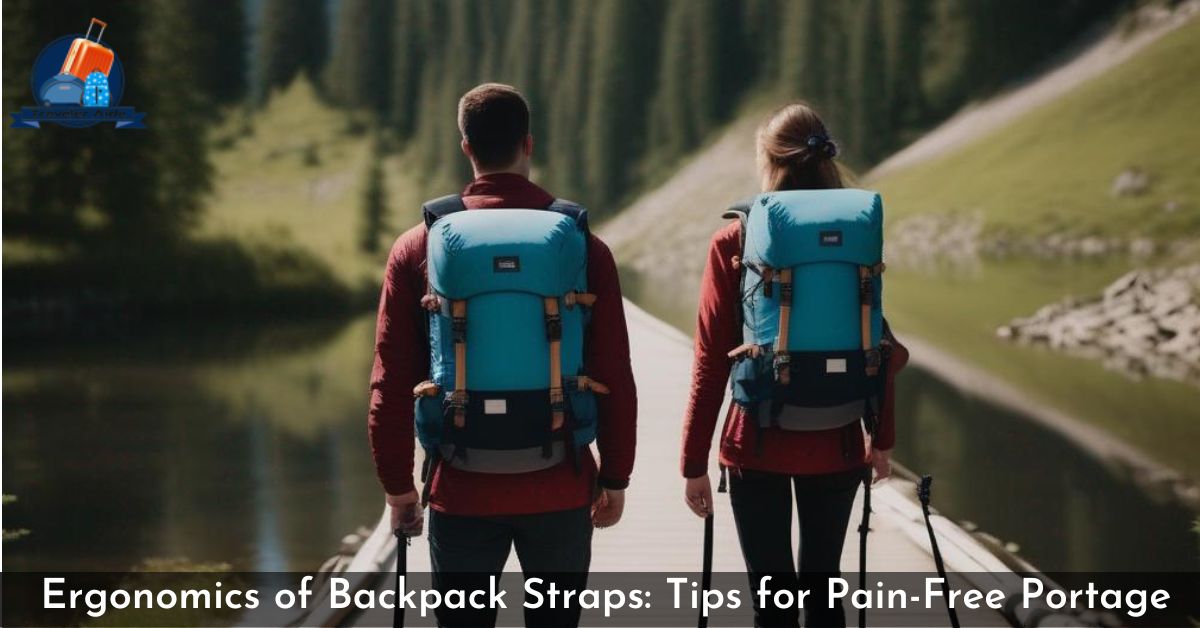
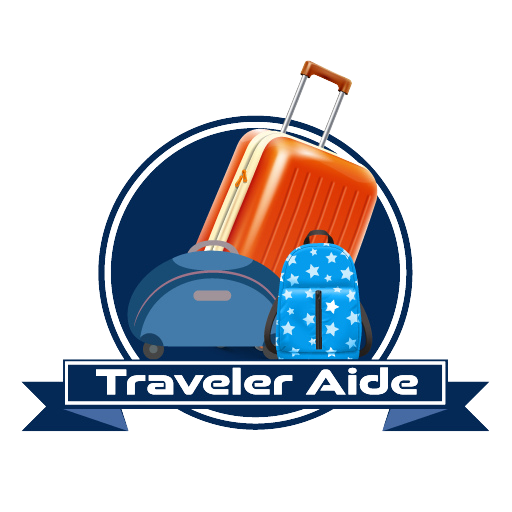
1 thought on “Ergonomics of Backpack Straps: Tips for Pain-Free Portage”